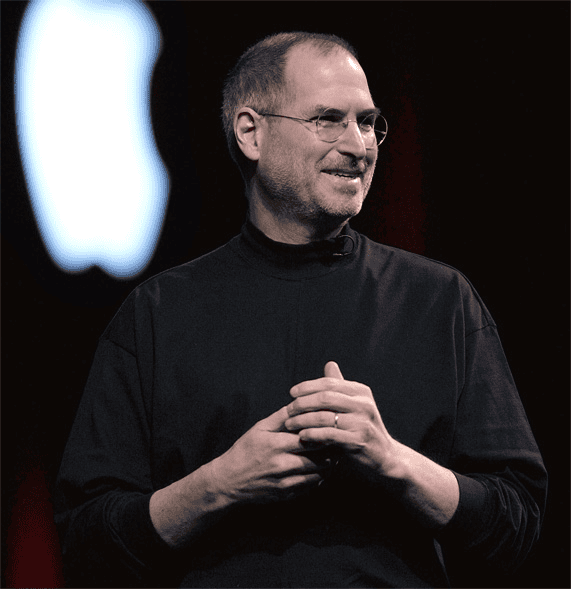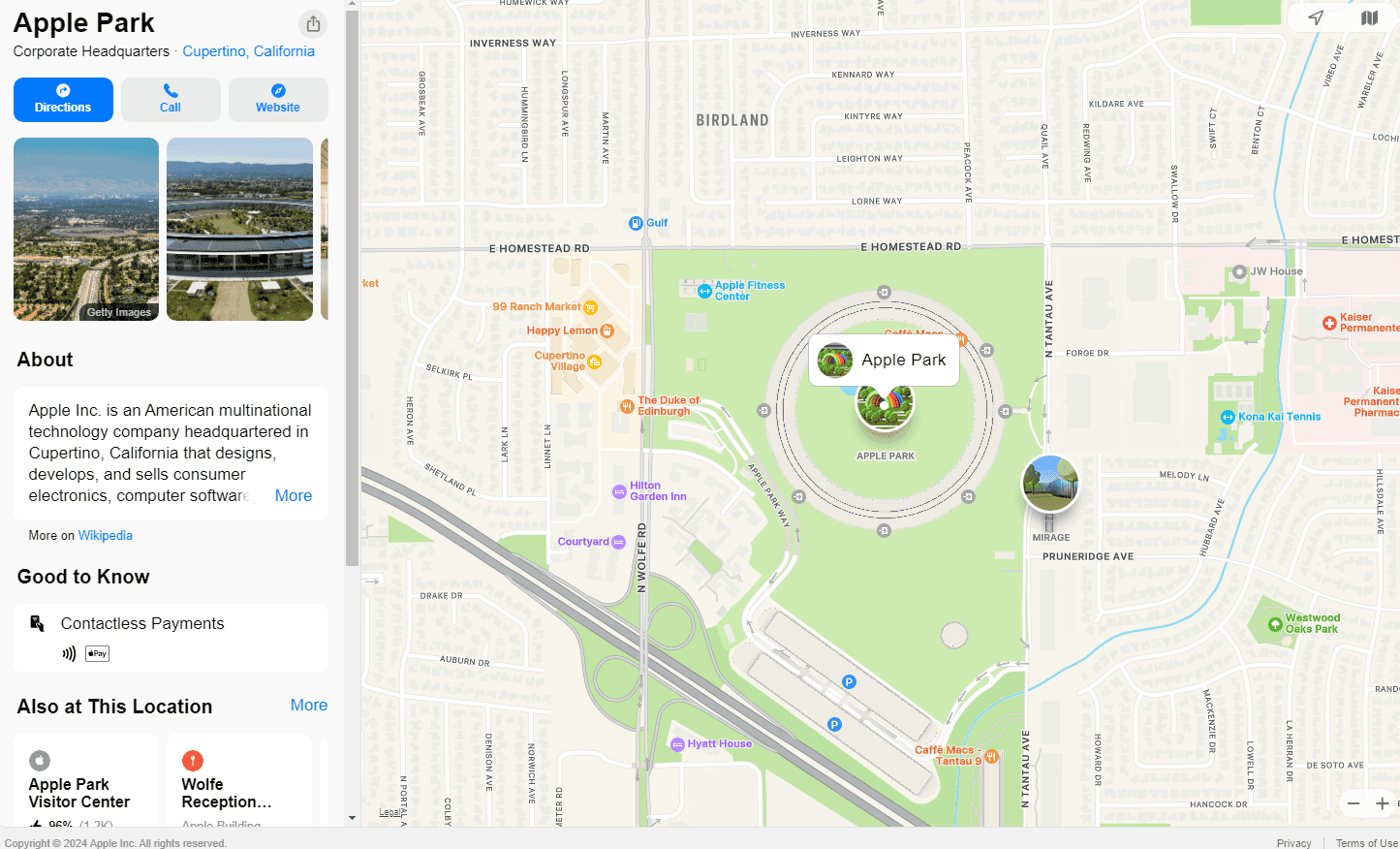Apple Inc. is a leading technology company based in Cupertino, California. Founded in 1976, it has grown into one of the most valuable and influential corporations in the world. Apple designs, manufactures, and sells a wide range of consumer electronics, software, and services that have revolutionized the tech industry.
The company’s product lineup includes iconic devices such as the iPhone, iPad, Mac computers, and Apple Watch. These products are known for their sleek design, user-friendly interfaces, and seamless integration with Apple’s software ecosystem. Apple also offers various services like iCloud, Apple Music, and the App Store, which enhance the user experience across its devices.
Apple’s success stems from its focus on innovation, quality, and customer satisfaction. The company has a history of introducing groundbreaking technologies and setting industry standards. Apple’s commitment to privacy and security has also become a key selling point for its products and services in recent years.
Apple Inc.: The Tech Giant That Shaped Modern Technology
Overview
Apple Inc. is a multinational technology company. It designs, manufactures, and sells consumer electronics, software, and online services. Apple is known for its innovative products and sleek design. It has a loyal customer base.
History

Steve Jobs, Steve Wozniak, and Ronald Wayne founded Apple in 1976. The company’s early focus was on personal computers. The Apple II was one of the first highly successful mass-produced personal computers.
Products
Apple has a wide range of products. These include:
- iPhone: The iPhone is a line of smartphones. It revolutionized the mobile phone industry.
- Mac: The Mac is a line of personal computers. It is known for its user-friendly interface and creative software.
- iPad: The iPad is a line of tablet computers. It is popular for its portability and versatility.
- Apple Watch: The Apple Watch is a smartwatch. It tracks fitness and provides notifications.
- AirPods: AirPods are wireless earbuds. They are known for their seamless integration with Apple devices.
- Apple TV: Apple TV is a digital media player. It streams content to televisions.
Software and Services
Apple also develops software and online services. These include:
- iOS: iOS is the operating system for iPhones and iPads.
- macOS: macOS is the operating system for Mac computers.
- iCloud: iCloud is a cloud storage service. It syncs data across Apple devices.
- Apple Music: Apple Music is a music streaming service. It has a large catalog of songs.
- Apple Pay: Apple Pay is a mobile payment service. It allows users to make contactless payments.
Financial Performance
Apple is one of the most valuable companies in the world. It has a high market capitalization. It generates significant revenue from its products and services.
Corporate Culture
Apple is known for its strong corporate culture. It emphasizes innovation and secrecy. It has a loyal and dedicated workforce.
Environmental Initiatives
Apple is committed to environmental sustainability. It uses renewable energy. It aims to reduce its carbon footprint.
Apple’s Impact
Apple has had a significant impact on the technology industry and popular culture. Its products and services have changed how people communicate, consume information, and interact with technology.
Key People
- Tim Cook: Tim Cook is the CEO of Apple. He succeeded Steve Jobs in 2011.
- Jony Ive: Jony Ive was the Chief Design Officer of Apple. He played a key role in the design of many iconic Apple products.
Apple Park

Apple Park is the company’s headquarters. It is located in Cupertino, California. It is a circular building with a futuristic design.
Key Takeaways
- Apple Inc. is a global technology leader known for innovative consumer electronics and software.
- The company’s product lineup includes popular devices like the iPhone, iPad, and Mac computers.
- Apple prioritizes innovation, quality, and user experience in its products and services.
Company History
Apple Inc. stands as a titan in the technology world, renowned for its innovative products, sleek design, and devoted customer base. From its humble beginnings in 1976 with the Apple II to its current dominance with the iPhone and Mac, Apple has consistently pushed the boundaries of consumer electronics. Its ecosystem of seamlessly integrated products and services, along with a strong emphasis on user experience, has reshaped how we interact with technology. Apple’s influence extends beyond gadgets, with its software, online services, and even its distinctive corporate culture leaving a lasting mark on the industry and popular culture.
Apple Inc. evolved from a garage startup to a global technology leader. The company’s journey encompasses groundbreaking products, visionary leadership, and strategic acquisitions.
Founding and Early Years
Apple Computer Company began on April 1, 1976. Steve Jobs, Steve Wozniak, and Ronald Wayne founded the firm in Jobs’ garage. Wayne soon left, selling his stake for $800. Jobs and Wozniak remained to build the company.
The Apple I, their first product, was a bare circuit board. It sold for $666.66. In 1977, they introduced the Apple II. This user-friendly computer brought color graphics and an integrated keyboard. It became a bestseller.
Apple went public in 1980. The IPO generated more capital than any since Ford Motor Company in 1956. By 1983, Apple entered the Fortune 500 list of America’s top companies.
Expansion and Innovation
The 1984 launch of the Macintosh marked a turning point. Its graphical user interface revolutionized personal computing. Despite initial success, internal conflicts led to Jobs’ departure in 1985.
John Sculley took over as CEO. He focused on the education market and desktop publishing. The company introduced the LaserWriter printer and PageMaker software.
In the 1990s, Apple faced challenges. Microsoft Windows gained market share. Apple’s product line became confusing and overpriced. The company’s market share and stock price declined.
Jobs returned in 1997. He streamlined the product line and introduced the colorful iMac. This all-in-one computer helped restore Apple’s reputation for innovation and design.
Acquisitions and New Ventures
Apple’s growth strategy included key acquisitions. In 1997, it bought NeXT Software, bringing Jobs back to the company. This deal provided technology for the Mac OS X operating system.
The company entered the music industry in 2001 with the iPod and iTunes. These products transformed how people buy and listen to music. The iTunes Store became the largest music retailer in the U.S. by 2008.
Apple revolutionized mobile phones with the iPhone in 2007. The App Store followed in 2008, creating a new ecosystem for mobile software. In 2010, the iPad defined the tablet computer market.
Recent acquisitions expanded Apple’s capabilities. It bought Beats Electronics for $3 billion in 2014, entering the high-end headphone market. In 2019, Apple acquired Intel’s smartphone modem business, boosting its wireless technology development.
Products and Services
Apple Inc. offers a wide array of products and services that span hardware, software, and digital platforms. The company’s ecosystem is built on seamless integration between devices and services.
Hardware
Apple’s hardware lineup includes iconic devices that have shaped the tech industry. The iPhone, introduced in 2007, revolutionized smartphones with its touchscreen interface and App Store. It remains Apple’s flagship product, with new models released annually.
The iPad, launched in 2010, created the modern tablet market. It comes in various sizes and capabilities, from the compact iPad mini to the powerful iPad Pro.
Mac computers form the backbone of Apple’s personal computing offerings. The MacBook Air, MacBook Pro, iMac, Mac mini, and Mac Pro cater to different user needs and preferences.
The Apple Watch, introduced in 2015, leads the smartwatch market. It focuses on health tracking, fitness, and communication features.
AirPods, Apple’s wireless earbuds, have become hugely popular since their 2016 debut. The product line has expanded to include AirPods Pro and AirPods Max.
Software and Operating Systems
Apple develops its own operating systems for its devices. macOS powers Mac computers, while iOS runs on iPhones. iPadOS, a tablet-specific variant of iOS, was introduced in 2019 for iPads.
watchOS and tvOS are specialized operating systems for Apple Watch and Apple TV respectively.
Apple’s software suite includes productivity apps like Pages, Numbers, and Keynote. Creative professionals use Final Cut Pro for video editing and Logic Pro for music production.
The Safari web browser comes pre-installed on Apple devices. It emphasizes privacy and seamless integration with other Apple services.
Digital Services
Apple Music, launched in 2015, offers streaming access to millions of songs. It competes with Spotify and other music streaming services.
iCloud provides cloud storage and syncing for Apple device users. It backs up photos, documents, and app data across devices.
The App Store is a digital distribution platform for iOS apps. It has transformed software distribution and spawned a massive app economy.
Apple TV+ is the company’s streaming video service, featuring original content. It competes with Netflix, Disney+, and other streaming platforms.
Apple Pay allows users to make secure payments using their Apple devices. It works in stores, apps, and websites.
Retail and Online Stores
Apple operates a global network of retail stores. These sleek, minimalist spaces showcase Apple products and offer technical support through the Genius Bar.
The Apple Online Store provides a digital shopping experience. Customers can customize Macs, compare iPhone models, and order accessories.
Apple’s retail strategy includes authorized resellers and carrier partners. These expand the company’s reach beyond its own stores.
The Apple Store app allows customers to shop, track orders, and book Genius Bar appointments from their devices.
Business Strategy and Operations
Apple’s business strategy and operations focus on innovation, premium product positioning, and vertical integration. The company’s approach spans sales, supply chain management, and research efforts to maintain its market leadership.
Sales and Marketing
Apple employs a premium pricing strategy for its products. The company targets consumers willing to pay more for high-quality devices with sleek designs. Apple Stores serve as key retail outlets, offering hands-on experiences with products and expert staff assistance.
Apple’s marketing emphasizes product features, user experience, and brand image. The company uses minimalist advertising to showcase its devices’ capabilities. Apple also leverages its ecosystem of interconnected products and services to encourage customer loyalty.
Partnerships with carriers and third-party retailers expand Apple’s sales channels. The company offers financing options to make products more accessible to a wider range of consumers.
Supply Chain and Production
Apple maintains a complex global supply chain. The company sources components from multiple suppliers to reduce risk and ensure competitive pricing. Apple’s production strategy involves outsourcing manufacturing to partners like Foxconn while maintaining strict quality control.
The company invests in advanced manufacturing processes and automation to improve efficiency. Apple’s supply chain management focuses on just-in-time inventory to minimize costs and reduce waste.
Apple has increased efforts to improve transparency and accountability in its supply chain. The company publishes annual progress reports on supplier responsibility and works to address labor and environmental concerns.
Research and Development
Apple invests heavily in R&D to drive innovation. The company’s research efforts focus on new technologies, materials, and manufacturing processes. Apple’s R&D strategy emphasizes both incremental improvements to existing products and breakthrough innovations.
The company maintains secrecy around its research projects to protect competitive advantages. Apple’s R&D teams work across disciplines, combining hardware, software, and services expertise.
Apple acquires smaller companies to gain access to new technologies and talent. These acquisitions often integrate into Apple’s existing product lines or contribute to future innovations.
Corporate Responsibility
Apple Inc. prioritizes environmental stewardship, social impact, and user privacy in its corporate responsibility efforts. The company aims to create positive change through sustainable practices, community engagement, and robust data protection measures.
Environmental Initiatives
Apple has set ambitious goals to reduce its environmental impact. The company achieved carbon neutrality for its corporate operations in 2020. It now focuses on making its entire supply chain and product lifecycle carbon neutral by 2030.
Apple invests in renewable energy projects globally. These investments power its facilities and support clean energy in local communities. The company also works to conserve water resources and reduce waste in its operations and supply chain.
Apple designs products with recycled materials. It has programs to recover and reuse old devices. The company’s packaging uses more recycled and responsibly sourced materials each year.
Social Impact
Apple engages in various initiatives to promote equity and education. The company launched a $100 million Racial Equity and Justice Initiative in 2020. This program supports underserved communities and promotes racial justice.
Apple provides educational resources and coding programs. These efforts aim to increase access to technology skills for students of all backgrounds. The company partners with schools and nonprofits to expand these opportunities.
Apple enforces strict labor and human rights standards in its supply chain. It conducts regular audits to ensure fair working conditions. The company also invests in worker education and skills training programs.
Security and Privacy
Apple prioritizes user data protection and privacy. The company designs security features into its hardware and software from the ground up. This includes encryption, secure enclaves, and privacy-preserving technologies.
Apple minimizes data collection and gives users control over their information. The company offers features like App Tracking Transparency and Privacy Labels. These tools help users understand and manage how their data is used.
Apple advocates for strong privacy regulations. The company engages with governments and organizations to promote user privacy rights. It also resists attempts to weaken encryption or create backdoors in its products.
Leadership and Management
Apple’s leadership structure consists of an executive team and a board of directors. These groups guide the company’s strategic direction and oversee its operations.
Executive Team
Tim Cook leads Apple as CEO. He joined the company in 1998 and became CEO in 2011. Cook’s leadership style emphasizes collaboration and consensus-building among senior management.
The executive team includes key figures responsible for different areas:
- Jeff Williams (Chief Operating Officer)
- Luca Maestri (Chief Financial Officer)
- Katherine Adams (General Counsel)
- Eddy Cue (Senior Vice President of Internet Software and Services)
- Craig Federighi (Senior Vice President of Software Engineering)
This team works together to drive innovation and growth across Apple’s hardware, software, and services divisions.
Board of Directors
Apple’s Board of Directors oversees the company’s long-term strategy and governance. The board includes:
- Arthur D. Levinson (Chairman)
- Tim Cook
- James A. Bell
- Al Gore
- Alex Gorsky
- Andrea Jung
- Monica Lozano
- Ronald D. Sugar
Board members bring diverse expertise from technology, finance, and other industries. They meet regularly to review Apple’s performance, approve major decisions, and ensure the company operates ethically.
The board also sets executive compensation and succession planning. This structure aims to balance shareholder interests with Apple’s innovative culture and long-term vision.
Frequently Asked Questions
Apple Inc. is a prominent technology company with a rich history and innovative products. Many people have questions about its leadership, origins, and guiding principles.
Who is the current CEO of Apple Inc.?
Tim Cook is the current CEO of Apple Inc. He took over the role in 2011 after Steve Jobs stepped down. Cook has led Apple through significant growth and product launches.
What was the first product launched by Apple?
The Apple I computer was the company’s first product. It was released in 1976. Steve Wozniak designed this personal computer kit, which was sold as a motherboard.
What is the history of Apple Inc.?
Apple Inc. began in 1976 in a garage. Steve Jobs and Steve Wozniak founded the company. They aimed to make computers accessible to everyone. Apple grew rapidly, introducing revolutionary products like the Macintosh, iPod, iPhone, and iPad.
When was Apple Inc. founded?
Apple Inc. was founded on April 1, 1976. The company was incorporated on January 3, 1977. It started as Apple Computer Company and later became Apple Inc. in 2007.
What is the mission statement of Apple Inc.?
Apple’s mission is to create products that enrich people’s lives. They focus on innovation and user experience. The company aims to lead in technology by designing the best personal computers and mobile devices.
What are the core values upheld by Apple Inc.?
Apple’s core values include innovation, simplicity, and quality. They prioritize user privacy and environmental responsibility. The company also values diversity, inclusion, and accessibility in its products and workplace.







